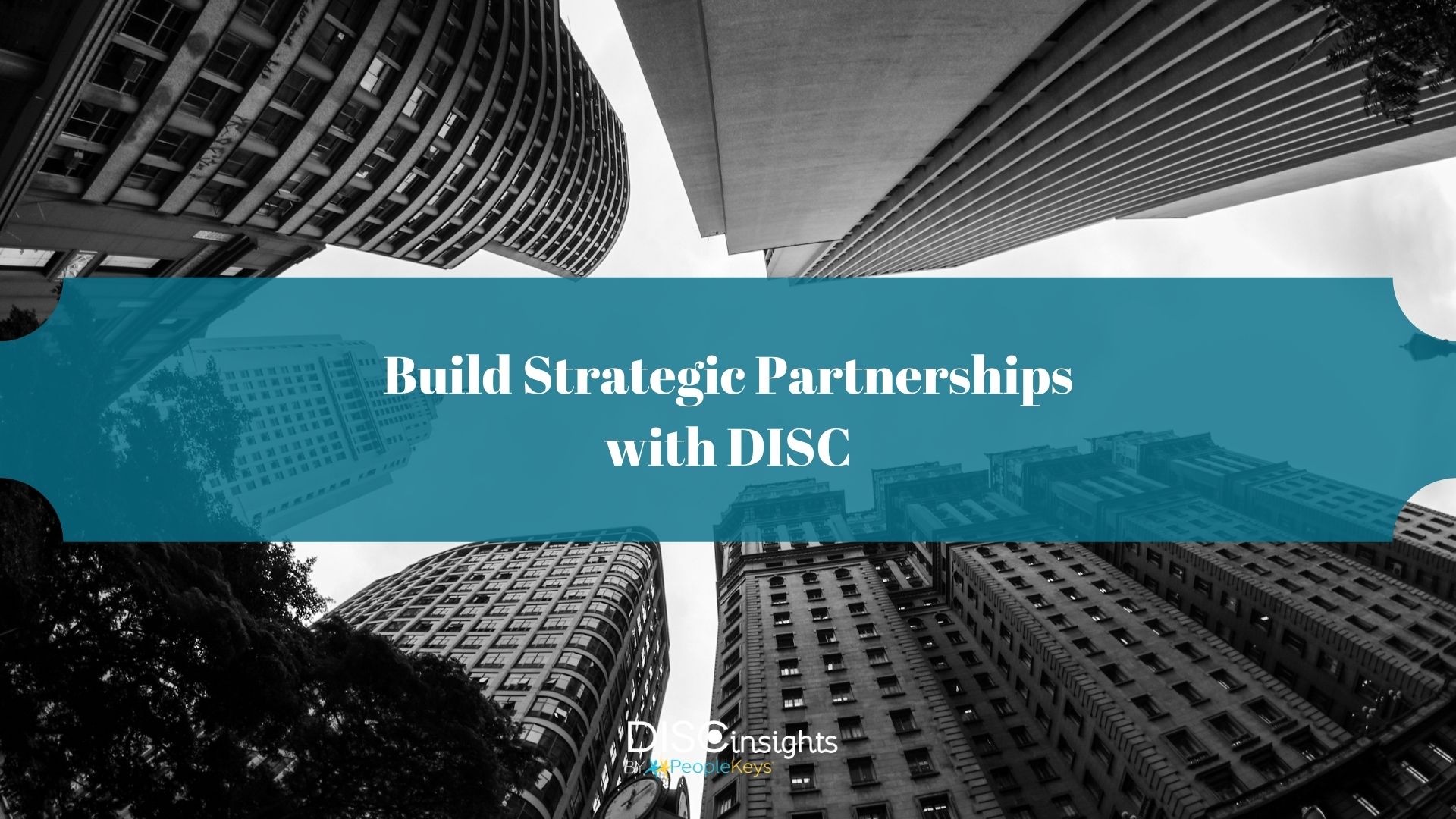- SHOP BY PRODUCT
- DISC TRAINING & CERTIFICATION TOOLS
- DISC RESOURCES
- BLOG
- SHOP BY PRODUCT
- DISC TRAINING & CERTIFICATION TOOLS
- DISC RESOURCES
- BLOG
- ALL ITEMS



A new year means new opportunities, a fresh start, and new beginnings. For many organizations, this also means new relationships, as companies seek to partner with like-minded associates in the expansion of ongoing business initiatives. Finding the support of new products, services, and community-based programming can often be a daunting task. So, forging strategic partnerships can be a godsend, when teaming up with just the right brand.
Partnerships will allow businesses to function separately, while also allowing them to aim toward a mutual business goal. Teaming up in the development of campaigns, companies often cut costs within budgets and share resources in order to maximize ROIs for each function that they serve. They will tap into existing markets and expand into new territories, while vouched for by those, who have already earned the trust of audiences in which we have something new to offer. Audiences will often receive a double incentive for following through to the call-of-action of said campaigns, as partnerships blossom with new opportunities on the rise and profits increasing over time.
When merging with future prospects, understand that every partnership will not breed results. In fact, not every brand is equally-yolked, so to speak, so careful vetting will need to take place. In order to make any campaign or joint initiative one that results in a more fruitful outcome, consider prospecting techniques, infused with DISC, to matchmake your company with a potential candidate for cross-promotion. You not only want to identify your future business targets, but you want to find others who could also benefit from your future business endeavors.

So, how will you sell your opportunity for partnership, and which approach will you take to influence the direction of joint efforts going forward?
Needless to say, strategic partnerships come with a ton of communication, the development of multidisciplinary teams, and stringent guides to follow when unifying two or more brands within the marketplace. We are held accountable for our actions and our associations with outside businesses. On the contrary, we also benefit from strong relationships with trustworthy brands. In order to capitalize on that potential, we need to understand how the company operates, the foundation on which it was built, and the leaders we will embrace, therein.
Most companies will be solicited for partnership at one time or another. How will your opportunity stand out? How will you encourage stakeholders and decision makers to adopt your ideas in the ways that benefit you most? How will they benefit? It’s time to do some research.
Once you decide which company or companies you should partner with, you will want to reach out to them directly. This means taking initiative, even if it is outside of your comfort zone. Determine the DISC style of the decision makers that you will meet with, and appeal to their behaviors for buying:
Once you have sold your idea, you will now need to move on to the development of scope, campaigns and product integration. Who are your shared audiences? Who are you trying to target? How will you present your product or service, or are you simply looking for awareness? How will you profit? How will you benefit? These are all questions that should be circulating, as you build and grow rapport with your new partner over time. This also means evolving your DISC strategy, as an extension of initiatives throughout the year.
Please keep in mind, our partners will go through a number of changes, irrelevant to our own endeavors. Whether internal or external to business, you will be indirectly affected. In DISC theory, we learn that a person’s behavior will change, based on immediate stressors or environments. Why would this be any different for corporate leadership and stakeholder interests? Because of this, we should prepare in advance, keeping our campaigns going and our partnerships afloat. Changes to the economy must also be considered, because not only will our businesses be impacted but our customers may be more hesitant to buy.
Let your partners know that you are there for them and ready to adjust in support of their needs. Cultivate those relationships. Find ways to benefit one another, outside of the immediate campaign objectives. By doing so, you will learn that trust and loyalty have already embedded themselves into the mix and future opportunities will be met with less hesitation.
Last but not least – numbers. How is the partnership truly benefiting business? Where have you improved operations and increased profits overall? How have they? Determine what’s working and what’s not working. Optimize your campaign. Remember, this is the stuff that drives a “C”-type personality and can be the difference between more participation and funding, or dissolution of the partnership, as a whole.
To learn more about prospecting strategies and how you can incorporate these into your partnership action plan click here.

© PeopleKeys. All Rights Reserved
WORKING DAYS/HOURS
Mon - Fri / 8:30AM - 5:00PM EST
